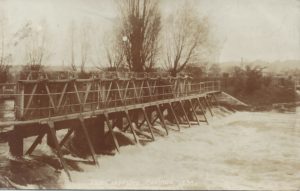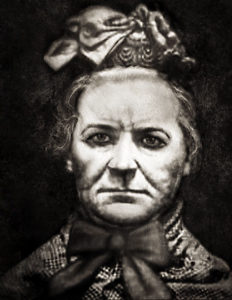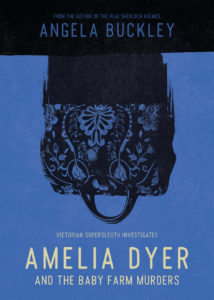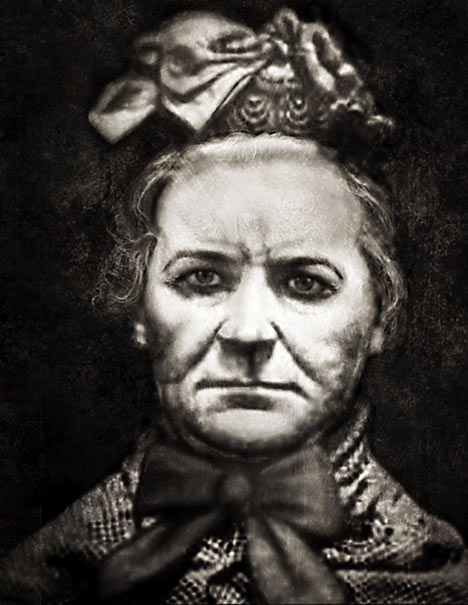
When bargeman Charles Humphreys and his mate leaned over the gunwale to hook the floating parcel and pull it aboard, the last thing they expected to find inside was a dead baby.
Humphreys had been navigating his barge upstream on the River Thames when he first spotted the brown paper parcel bobbing in the water. He and his mate hooked it as they maneuvered his barge towards the shore near Reading. The men brought the package ashore to a towpath. There the mate tore open the wet packaging – paper and two layers of sodden flannel. An infant’s foot emerged. Leaving his mate to guard the parcel, he ran to town to fetch the police. That police report, on March 30, 1896, became the first clue in a case of baby farm murders. The ensuing investigation not only exposed one of Britain’s most prolific serial killers, with an estimated victim count of 300. It also led to the creation of modern child protection laws.
There can be little doubt that the police have unearthed a case which will prove the most remarkable in the annals of crime for many years past. – Berkshire Chronicle, April 18, 1896.
The package concealed a dead baby girl, aged 6-12 months old, with a ligature around her neck. A local surgeon examined her and confirmed the police’s suspicions. The baby had been strangled. An address on the brown wrapping paper led the police to Amelia Dyer, a woman who made her living as a foster mother – by running a “baby farm.”
As the police investigated her and dredged the Thames for more bodies, the emerging body count and evidence of child abuse appalled the country more than Jack the Ripper’s five murders even had. The baby farm murders revealed a dark underbelly of Victorian society. Period laws made it almost impossible for single mothers – sometimes even widows – to keep their own children. Thousands gave their babies up to foster parents, who charged fees for childcare. A few foster mothers took advantage of the situation. They collected the fees but killed the babies.
Historical true crime author Angela Buckley, who recently published a book, Amelia Dyer and the Baby Farm Murders (Victorian Supersleuth Investigates), joins us today for an interview about one of Britain’s most horrific serial killers. I’ve added a few block quotes with additional information.
Welcome, Angela Buckley!

Is “Victorian Supersleuth Investigates” going to be a historical true crime series?
Yes, it’s a series of short true crime cases, which all start with a murder and then follow the investigation as it unfolds, with all the clues, challenges, and obstacles that the detectives encountered. The books are written like crime fiction and are ‘quick reads’– perfect for a true crime coffee break!
Are you planning another book?
My next book in the Victorian Supersleuth Investigates series is Charlie Peace and the Murder of PC Cock. At midnight on 1 August 1876, PC Cock was shot in the leafy suburbs of Manchester. Superintendent James Bent thought he knew who the killer was succeeded in bringing PC Cock’s murderer to justice but, in an astonishing twist, the killer’s real identity was revealed some years later. Charlie Peace and the Murder of PC Cock will be published in spring 2017.
How many babies did Amelia Dyer kill?
It is not known how many babies died at the hands of Amelia Dyer. By the time of her arrest, she had been active as a baby farmer for almost three decades, and most of those children probably perished, perhaps more often from neglect than cold-blooded murder. Although there is no concrete evidence, it is likely that she was responsible for the deaths of hundreds of babies, given the length of time she ran her baby farming business.
According to an article in the Independent, Amelia Dyer killed at least 300 babies. She was probably Britain’s most prolific serial killer.
What was “baby farming”? Was it a common practice?
Baby farmers were the Victorian equivalent of child minders. Also known as ‘nurses’, they advertised in the newspapers to care for infants for a weekly fee, usually five shillings. They also offered a full adoption for a one-off payment. In the cities, it was very common in the late 19th century for married women working in factories to place their children each day with a baby farmer. For single mothers, it was an opportunity to relieve themselves of the burden of an unwanted baby. Sadly, many of the baby farmers neglected the infants in their care; they drugged them with laudanum to keep them quiet, and slowly starved them to death.

How did Victorian law and morals force women to give up their babies?
In the Victorian era, illegitimacy carried a deep social stigma, and single women who fell pregnant were often thrown out of their homes and family and lost their jobs. Many were domestic servants, who lost everything – most of the mothers who gave their babies to Amelia Dyer were in service. There was no social security and no state-run orphanages or no legal adoption system, so single mothers were faced with the prospect of giving up their child in order to survive. The 1834 Poor Law Amendment Act made the situation even worse, as outdoor parish relief was replaced by the workhouse, in which parents were separated from their children. Some unmarried mothers were so desperate that they even killed their own babies. Others handed them to a baby farmer.
The 1834 Poor Law Amendment Act absolved fathers from financial responsibility for children born outside of wedlock. The legislature felt that penalizing men for the children they sired would force them to marry against their will and financial support for unwed mothers would discourage chastity and encourage extortion and perjury. Children became the unintended victims of this law.
Did any parents ever try to reclaim their babies?
Some parents returned to a baby farmer’s each day, after work, to take their children home for the night but for many, it was understood that once they placed their child with a baby farmer for adoption, they would not expect to see them again. I think it was probably quite rare that parents tried to reclaim their child after such an agreement had been made, although it did happen in Amelia Dyer’s case – the parents never found their child, who was likely to have died.
The coroner gave the police two weeks following the discovery of the first body to tie up ends and solve the cases. Were murder cases of the period usually solved so quickly?
In my experience of Victorian criminal cases, it seems quite usual for murders to be investigated and processed quickly through the courts to the final trial. However, most crimes went unsolved and the most common coroner’s verdict was ‘murder by person or persons unknown’. Early 19th-century police records reveal that conviction rates, in general, could be low as 5%. Around the time of the Dyer case, there were several coroner’s inquests into infants found in the Thames, but most were inconclusive and therefore not used as evidence against her.
The more the case is unraveled, the more revolting do the details appear. – Bershire Chronicle, April 18, 1896
Why was it so hard to find enough evidence in the baby farm murders?
Although infant bodies were found in rivers near the places Amelia Dyer lived in the south of England, it was impossible to link them to Dyer without modern forensic techniques and DNA testing. The Victorian police had to rely on circumstantial evidence. Although Amelia Dyer was investigated several times for neglect, after babies died in her care, it was extremely difficult to prove that she had been responsible for their deaths. In Reading, the police found letters in her home, which provided them the links to the victims’ parents so that they could construct a compelling case against her.
This case was huge. The baby farm murders led to the creation of modern child protection laws in Britain. How?
Prior to the 1870s, there were no laws in Britain regulating those who cared for other people’s children. Towards the end of the 1860s, baby farms began to come to the police’s attention and, in 1870, Margaret Waters became the first baby farmer to be hanged for infanticide, after a child in her care died from neglect. This shocking case led to the 1872 Infant Protection Act, which required any person taking in more than one nurse child for more than 24 hours to be registered with the police. However, there were still more infant deaths at the hands of unscrupulous baby farmers, which reached a climax with the conviction of Amelia Dyer in 1896. The 1908 Children’s Act established the framework for modern child protection policies.
Thank you, Angela Buckley!
Sometimes legislation is like a barge working its way upstream on the Thames. It takes society a while to recognize negative effects of its old laws and to navigate a new legal course. Hundreds of infants paid the price for Britain’s misguided attempt to stigmatize single mothers. Amelia Dyer and the baby farm murders led to new legislation to protect children. That is the legacy of this case.

Literature on point:
Angela Buckley, Amelia Dyer and the Baby Farm Murders (Victorian Supersleuth Investigates) (Manor Vale Associates, 2016).




